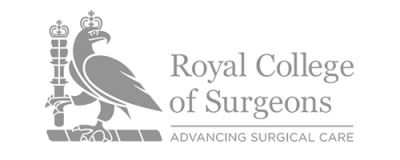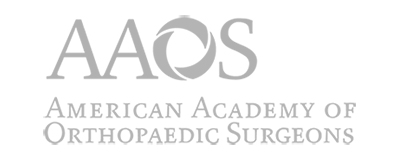ARTHRITIS OF THE KNEE
The two main forms of arthritis affecting the knee are osteoarthritis (OA) and rheumatoid arthritis (RA).
Rheumatoid arthritis is a condition of unknown cause where the lining membrane (the synovium) of joints becomes inflamed. Damage to the joint surfaces follows, resulting in the destruction of the lining cartilage; the joint becomes painful and arthritic. Many joints can be involved, especially those in the hands and feet, but the larger joints such as the hip and knee are also commonly affected.
Osteoarthritis is by far the most common form of arthritis. It is estimated that 25% of females and 16% of males over the age of 60 are symptomatic from osteoarthritis. It accounts for more than 95% of knee replacements undertaken in the UK each year (over 40,000). This page concentrates on osteoarthritis.
OSTEOARTHRITIS (OA)
OA is a degenerative disorder in which there is progressive loss of articular (surface) cartilage accompanied by new bone formation and capsular fibrosis (stiffening). In effect, this is ‘wear and tear’ arthritis. Many joints can be affected or just one.
There are 2 basic types of osteoarthritis; primary and secondary:
CAUSES
There is no obvious cause of primary osteoarthritis; causes of secondary OA include:
- previous trauma (fracture, ligament rupture and cartilage injuries)
- developmental disorders causing abnormal anatomy (e.g. patello-femoral dysplasia and maltracking)
- childhood knee conditions causing malalignment of the knee
- miscellaneous conditions such as avascular necrosis
SYMPTOMS
Knee osteoarthritis usually starts in one of the knee compartments (medial, lateral or patellofemoral) but with time and disease progression it usually spreads to involve most, if not all of the knee.
The main symptom of knee arthritis is pain. Pain is usually felt at the level of the joint line between the bottom end of the femur and the top of the tibia but can also be a more general type of pain and can even be felt purely at the front of the knee over the patella (kneecap).
The pain from knee OA is usually worse with any sustained activity (e.g. walking for any distance, golf) and also towards the end of the day. The knee may swell as a result of fluid accumulation within the knee joint; this is called an effusion.
Occasionally patients may complain that their knee feels as if it is about to give way. This is known as instability and can be as a result of pain or ligament damage secondary to OA. Frequently the knee becomes stiff, with a reduction of movement, and may on occasion be impossible to straighten. This is called a fixed flexion deformity and makes walking or standing for any period of time very difficult.
INVESTIGATION
Diagnosis of knee OA is made by x-rays. At least 2 and sometimes 3 views are needed to confirm the diagnosis. There are varying degrees of wear and tear visible on x-ray depending on the stage of the condition and the length of time of symptoms.
TREATMENT OPTIONS
Many patients with arthritic knees do not need a knee replacement. There are many ways of coping with the pain from knee arthritis; they include:
- Simple painkillers
- Anti-inflammatory medication
- Weight reduction
- Activity modification
- Using a walking stick (using the stick on the SAME side)
- Physiotherapy to strengthen the muscles and maintain knee movement
- Injection into the joint (usually local anaesthetic and steroid)
- Arthroscopy to ‘clean’ the knee out, resect any meniscal tears and stabilise areas of cartilage damage
However, in the majority of cases there comes a point when these are insufficient and the amount of pain and its impact on lifestyle become intolerable; knee replacement becomes a sensible treatment option.
Discussion with Nadim is important to answer any questions that you may have. For information about any additional conditions not featured within the site, please contact us for more information.









